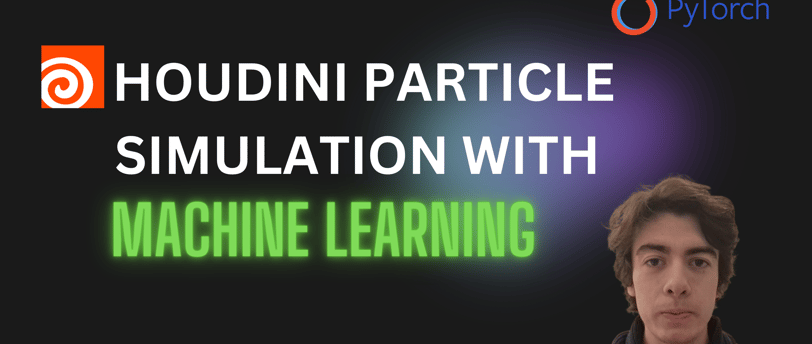How to make a houdini particle simulation with machine learning


I recently have been fascinated about combining Houdini's powerful particle simulation capabilities with the cutting-edge technology of machine learning. By leveraging machine learning algorithms, we can access innovative ways to enhance and control particle behaviour within Houdini.
Understanding Particle Simulation:
Traditional approaches to particle simulation often rely on deterministic algorithms and numerical methods to solve complex equations governing particle behavior. While effective to some extent, these methods have inherent limitations. They struggle to accurately capture nonlinear interactions, require extensive computational resources, and may overlook emergent properties that arise from collective behavior.
Applications of ML in Particle Simulation:
Machine Learning offers a paradigm shift in particle simulation by leveraging data-driven techniques to model complex systems. Instead of explicitly programming rules and equations that 3D algorithms provides, ML algorithms learn from vast datasets to identify patterns and relationships within the data. This data-driven approach enables the simulation to adapt and generalize, leading to more accurate and realistic results.
Advantages of ML-based Particle Simulation:
There are several advantages to using ML for particle simulation:
Accuracy: ML models can capture complex relationships and nonlinear dynamics with high fidelity, leading to more accurate simulations.
Efficiency: ML-based simulations often require fewer computational resources compared to traditional methods, allowing for faster simulations and iterative experimentation.
Adaptability: ML models can adapt to new data and scenarios, making them versatile across a wide range of applications.
Generalization: ML algorithms can generalize from training data to unseen scenarios, providing insights into emergent behavior and phenomena.
Watch my tutorial
I’ve made a tutorial centred on how to extract point positions from houdini particles, train a simple model and test it to know new particle positions. In future videos it will be covered how to use better ML models, such as RNN, to perform this task and get more accurate results.
To watch the tutorial, just hit the link below:
Check out the full YouTube video here (and be sure to subscribe to my channel).
